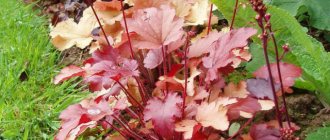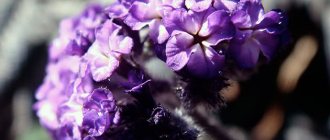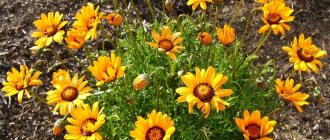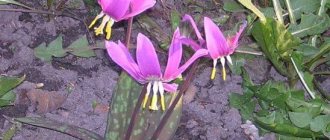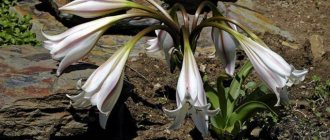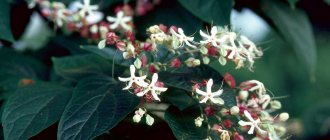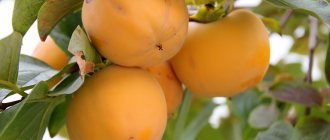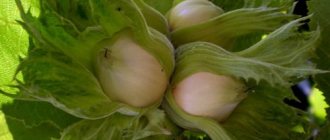How to choose
- The persimmon is carefully examined. Particular attention is paid to its skin and stalk. A thin, glossy peel and a completely dried stalk are indicators that the fruit is ripe while still on the branch. And the presence of thin brown lines indicates its full maturity.
- Black spots and cracks should not be present on the surface. In this case, the storage of persimmons will not last long.
- The degree of ripeness can also be determined by the pulp: when pressed, the pulp should not be hard.
- It is better to buy a product with a round shape. If the fruits are cone-shaped, flattened or cylindrical, their taste may be bitter and too astringent.
- Unripe persimmons are light orange in color, while fully ripe persimmons range in color from bright orange to brown. This will depend on the variety.
- Soft fruits that are already overripe will not be stored - this must be taken into account at the time of purchase.
SELECTING A VARIETY OF PERSIMOMS
Persimmon is considered a heat-loving crop. Therefore, European breeders have worked hard to adapt it to our conditions. In Kazakhstan, 3 varieties are traditionally grown: Rossiyanka, Korolka and Bull's Heart. Caring for them is similar. The varieties differ mainly in the ripening period of the berries, the size, color and taste of the fruit.
Russian
This early variety has very high frost resistance. Actually, this is what it was created for - to endure cold, long winters. The Russian woman is also amazingly resilient to diseases - you can forget about seasonal spraying.
The fruits ripen in September. Their weight is approximately 120 g. The variety has one peculiarity: after harvesting, leave the berries to ripen for another couple of weeks.
Korolek
It begins to bear fruit in mid-autumn (October). The fruits of this variety are sweet and larger than those of the Russian woman - 250 g. The trees can grow up to 10 m, are not prone to diseases and have proven good frost resistance - down to -28 C.
Bull Heart
This variety has the largest fan club. Its popularity is based on its ability to self-pollinate and bear fruit for up to 50 years. Speaking of fruits, this tree produces the latest fruits (November) and the largest (about 500 g). And in terms of winter hardiness, the variety is inferior only to Rossiyanka.
Storage conditions
You can store persimmons not only in the refrigerator. It is allowed to keep this delicacy at room temperature for some time. Fully ripened fruits are stored at 0°C -+1°C and humidity 90%. It is advisable to keep them in the freshness zone of the refrigerator. It is best to place the fruit stem down. There should be a small distance between the fruits, and it is also fashionable to wrap each of them in paper. This is necessary to prevent rotting of neighboring trees if there is one rotten one. There is no need to wash persimmons before storing them.
How to store persimmons?
This fruit must be stored correctly. Fruits will not spoil in cooling chambers. Favorable storage temperature is 0 degrees. If the air humidity does not exceed 90%, then the persimmon can lie in storage for about 3 months. At lower humidity (up to 85%), the fruits wither and lose their shape. If the humidity level is more than 90%, then the fruits rot and the persimmon becomes moldy. If the temperature conditions are observed, the ripening processes can be accelerated or slowed down. Many people use artificial fruit ripening technology. The use of ethylene gas allows persimmons to ripen faster than their natural time. After chemical treatment, the fruits ripen already on the 4th day, whereas naturally the fruits would take 25-30 days.
Cellar storage
- Persimmons should be stored in the cellar in wooden containers. It is placed in boxes, in a maximum of two layers. In this case, the bottom row is laid so that the stalk is at the bottom, and the top row, on the contrary, with the stalk up.
- To prevent the fruits from touching each other, they are separated by sprinkling with sawdust (soft shavings will also do).
- The condition of the crop must be constantly monitored. Once a week, inspect them and remove those that have begun to deteriorate.
- The shavings also need to be replaced with fresh ones. It is best to do this once a month.
- Those fruits that are already fully ripe (as a result have acquired a bright color and become soft) are moved to the cold.
Storage without refrigeration
In a warm place, without a refrigerator, storing persimmons is possible for only a few days. It is placed in the most shaded areas of the apartment with good air movement and inspected regularly. You cannot miss the time when the harvest begins to deteriorate.
When the persimmon reaches ripeness, it is placed in the fruit compartment of the refrigerator (freshness zone). After which they use it at their own discretion.
General storage table
Storage method
Cold storage
- You can store unripe persimmons that were purchased in an unripe state for as long as possible. In this form, it can be stored in the fruit container of the refrigerator (temperature 0 ° C - + 1 ° C, humidity - 90%) for up to 3 months.
- Overripe, softened fruits, or those that have been frozen, can be stored for no more than 7 days.
- Ripe persimmons cut into pieces are kept in the refrigerator for no more than 3 days.
- Fruits need access to air, so it is better to keep them open or in paper bags. If you put them in a plastic bag, very soon they will begin to rot.
Features of cultivation
Persimmon trees bear fruit for many years, most often this period reaches 60 years. You can get the first harvest two years after planting the seedlings. Trees begin to fully bear fruit after ten years. Persimmons are usually grown in large plantings. When planting, you should keep in mind that for 100 seedlings of one variety you need 10 seedlings that will pollinate the plants.
Persimmon does not require high humidity and large amounts of precipitation. The minimum quantity is 900 mm per year. It is better to grow trees in fertile loamy soil. Plants may not do well in sandy or gravelly soils.
Despite their rather demanding attitude towards soils, trees are absolutely unpretentious in care. They almost never require pruning. Persimmon copes well with severe frosts and prolonged subzero temperatures. Trees are less susceptible to rotting than others; they resist diseases and pests well.
Young shoots are fertilized with organic and mineral substances. This is usually done in early spring or mid-summer. Mature trees need to be watered at least 7-8 times a year.
The fruits begin to be harvested in mid-October. The ripening period of persimmon lasts about two months. From some varieties, fruits can be harvested until the second half of December. But usually persimmons ripen after the last leaf fall.
Frozen storage
Fruits can be frozen either whole or cut into pieces. Before storing persimmons in the freezer, they are washed, slightly dried from excess moisture, placed in containers and sent to the freezer, where they will retain their quality for 1 year.
When frozen, the taste of persimmon ceases to be tart and viscous and becomes sweet. Especially if the freezing took place in sugar syrup.
The structure of the pulp after defrosting may change to a looser one, but the taste and amount of nutrients will remain virtually unchanged.
It needs to be defrosted gradually, in a container with cold water, and not frozen again. Otherwise, the persimmon will lose its taste and beneficial qualities.
The best varieties to grow
There are more than 350 varieties of this plant.
The following varieties of persimmon are mainly cultivated in gardens:
- Caucasian - the birthplace of the Caucasus. Trees can reach 30 meters.
- Virginskaya - tolerates frosts down to -30 degrees, grows up to 20 meters in height.
- Eastern - originally from Asia. Many varieties have been bred from this variety of persimmon.
Persimmon varieties are divided into different groups: pollinated, non-pollinated, according to ripening time, according to taste.
In our gardens, varieties that are resistant to low temperatures are recommended for cultivation. These are “Rossiyanka”, “Nikitskaya Burgundy”, “Mount Roman-Kosh” and others.
Caucasian
Everyone knows the Korolek persimmon variety with excellent taste. The “Yalta” variety is distinguished by its lack of astringency and sweet aftertaste.
Storing dried persimmons
After drying, the product retains most of the vitamins and microelements. Drying proceeds according to the following scheme:
- The fruits are washed, peeled and cut into small pieces. You can leave them whole, but it will be more difficult to dry.
- Dry naturally or in the oven at a temperature of +60°C -+65°C. The oven door is kept slightly open during drying.
- Fruits with a firm consistency are suitable for drying: such as the Korolek variety.
Dried persimmons are stored well in cotton bags. Fresh air must constantly penetrate dried fruits. That is why it is unacceptable to store persimmons in hermetically sealed plastic bags.
It is advisable to store dried persimmons in dark, cool and dry places. A pantry or closed kitchen cabinet located away from heating appliances works well.
To prevent supplies from being attacked by pests, the bag is first soaked in a concentrated salt solution and then dried well. But it is still advisable to inspect the workpieces frequently to be sure that everything is in order.
Where can you grow persimmon? Persimmon requirements for growing conditions
Persimmon, according to breeders, has more than 725 species and grows under natural conditions in subtropical and tropical regions of different countries. In other regions, persimmon can also be grown in open and closed ground, creating conditions that meet its requirements.
If you decide to try to grow persimmon in your dacha in open ground or at home, carefully read the requirements of this crop for environmental conditions and agricultural cultivation techniques.
Temperature conditions
Persimmon requires a lot of heat and sun. Therefore, before deciding in what conditions to grow a crop, be sure to use reference books to find the values of active temperatures and the duration of solar radiation (sunny days during the growing season) in your area. They must be at least +3000 °C and 2000 hours per year, respectively. At these temperatures, persimmons can be grown in open ground.
At the nearest station, check out the climatic characteristics of your area of residence: the number of sunny days, precipitation, the temperature threshold of summer and winter temperatures and other indicators. Please note that persimmon is wind resistant. See if the indicators are optimal for growing persimmons. If the indicators are different, you can grow the crop in greenhouses with year-round heating and lighting, in greenhouses or at home.
During the growing season, persimmon develops well at temperatures of +25..+28-30 °C. Loves sunny weather, but without dry air. On such days, the tree needs to be sprayed with clean water to create a humidified microclimate (except for the flowering period).
In winter, the root system can withstand frosts down to -6..-8 °C. Frost-resistant varieties can withstand air temperatures within the range of -16..-18 °C. With a further decrease (-19..-20 °C), one-year and partially two-year growth is frozen. Some zoned frost-resistant varieties can withstand temperatures of -25..-27 °C, but frostbite of the crown constantly occurs.
It should be taken into account that sharp drops in temperature to –9 °C, especially at the end of autumn (November), can cause frostbite in young seedlings. With such climate cataclysms, young seedlings must be covered in the first years.
In regions where winter temperatures do not fall below -5..-8 °C, persimmons can be grown without winter shelter. In other regions, even frost-resistant varieties need winter shelter. For shelters, you can use any covering but breathable material: agrofibre, reeds, spruce branches, etc.
Lighting for persimmon
Persimmon has a very long growing season, but positive temperatures alone are not enough for normal growth and development. Bright lighting is required for a long period. Therefore, for growing in open ground, they choose well-lit areas, protected from wind and drafts. Some gardeners who have been working with persimmons for a long time recommend planting them near the wall of the house, thus creating natural protection.
The number of sunny days with sufficiently high temperatures is very important for this crop. With a lack of bright sunny days, the crown of the persimmon becomes weakly branched, the fruits are small and fall off early.
For example: in the Moscow region, bright sun and summer heat are not enough for normal persimmon growth. In this region, it will develop normally in a partially heated greenhouse, home garden, or greenhouse.
Persimmon soil requirements
The best soils for persimmons are chernozems (even loamy ones, with good drainage), forest soils, and turf soils. The culture does not tolerate waterlogged, saline, carbonate soils. It does not grow on pebbles, and when grown on sandy soils, it requires increased amounts of humus, mature compost and other additives that increase the moisture capacity of the soil.
Moisture requirements
Under natural conditions, 900-1200 mm of precipitation per year is enough for persimmons to grow and develop, that is, watering is needed during prolonged dry weather. Thus, in the Krasnodar Territory, approximately 700 mm of precipitation falls per year, which is clearly not enough for this crop. With good irrigation, persimmon easily tolerates increased dry air and responds positively to additional fine spraying. The soil should be moist, without stagnant water in the root system area.
Young persimmon seedling
The right choice of fruits
Persimmons, as a rule, are brought to our northern regions not quite ripe, but its benefits and taste, including its unpleasant viscosity, directly depend on the ripeness of the fruit. Therefore, the main task is to try to choose the very best specimens.
- You need to start your purchase by inspecting the fruit. The most ripe persimmons have thin, shiny skin and an absolutely dry stalk, indicating that they have ripened not in a box, but on their native tree. There may be thin brown stripes on the surface of the fruit, which indicate its absolute maturity. But there should be no cracks or black spots.
- The next selection criterion is the softness of the fruit. The more its surface yields when compressed, the riper the fruit.
- Pay attention to the configuration of the fruit. Round fruits are much tastier than their conical, flattened or cylindrical counterparts.
- The color of persimmon, depending on the variety, can vary from almost carrot-like to dark brown, the main thing is its saturation. Unripe fruits are usually light orange.
Methods for storing persimmons
Choosing the right fruit when purchasing is just the beginning. The main problem is to preserve this delicacy for as long as possible. You can store persimmons in three types: fresh, frozen and dried (or dried).
- Fresh fruits are perfectly stored at a temperature of about 0 ° C for about 2-3 months, depending on air humidity, which ideally should be 90%. When storing fresh persimmons, good ventilation and careful handling are very important. For storage, undamaged, dense specimens without stains or cracks are selected.
If storage is carried out in boxes in a cellar or basement, then the layers of fruit should be layered with sawdust or paper. Their proximity to apples or tomatoes has a beneficial effect on the preservation of fruits. The simplest and most common way to preserve persimmons for a long time is to freeze them, preferably at a temperature of -18° C. In this form, the fruit can be stored for up to three months without compromising its taste.
It is advisable to defrost fruit at room temperature or, in extreme cases, in warm, but not hot, water. It is convenient to freeze persimmons that are ready for use, that is, freed from peel and seeds, divided into large slices or smaller pieces. When dried, persimmon turns into a delicious delicacy that is consumed instead of sweets. It is not recommended to prepare compotes from it, since when cooked, the dried fruit releases tannins and tannin - and your treat becomes tart in taste.
It is possible to prepare dried sweetness only from dense ripe fruits in several ways. The most accessible is drying fruits, peeled and cut into small slices, in the oven at a temperature of 45 ° C, and they should not be allowed to darken. It is possible to dry these fruits whole in the shade in the open air or in a well-ventilated dark room, after first cutting the peel of the fruit and stringing it on a string by the stalk. The process is completed in a month and a half, after which dried fruits can be stored in a dry and cool place for 1–2 years, depending on the degree of dehydration of the fruit.
Persimmon
Product Description
With the arrival of November, fresh persimmons appear on market shelves - a real autumn fruit, both in color and in season. It can be both tart and astringent and sweet - and depending on the variety, it requires different handling.
We often hear that persimmon comes from the Far East - from China and Japan . This is not entirely true, because both Australia and America have their own types of persimmon. However, it is indeed true that the inhabitants of China and Japan have been pampering themselves with the delicate pulp of cultivated persimmon fruits since ancient times. It is also true that it was the eastern persimmon that was introduced into Europe in the 18th century . However, residents of Western Europe first became acquainted with persimmons not in the East, but in America. Thanks to the Indians, they learned: they need to wait until the leaves fall so that only bright orange fruits remain hanging on the gray trees, as if tied on strings. Later it turned out that many varieties of persimmon grow on other continents, including quite wide areas in Asia.
Persimmon is very useful. It compensates for the lack of vitamins and microelements in the body - primarily vitamins C, P, beta-carotene, group B, iodine, potassium, magnesium. It delicately stimulates the digestion process due to dietary fiber, which it contains in large quantities. In addition, dietary fiber slows down the absorption of sugars and lowers cholesterol levels, and absorbs harmful impurities, including salts of heavy metals. In the end, 100 grams of persimmon contain approximately 70 kcal, however, after eating a piece or two, you will feel full for a long time.
Types and varieties
There are about two thousand varieties of persimmon in the world. It can be from red to dark brown, from perfectly round and heart-shaped to flattened and almost square. And it also weighs differently - from 60 to 500 grams.
Biologists distinguish several types of wild persimmon - Caucasian persimmon (Diospiros lotus, native to the Far East), Virginia persimmon (Diospiros virjiniana, native to North America), eastern persimmon (Diospiros kaki, native to Asia), black sapota (Diospyros digyna, native to Central America) and some others.
All cultivated varieties of persimmon are bred on the basis of Virginia and Oriental persimmon. In many countries, cultivated persimmons are conventionally divided into variable , which changes color when ripe, and constant, which does not change. In Russia and the CIS countries, this classification is a little more complicated and all cultivated varieties of persimmon are divided into three groups: tannin (or constant), which corresponds to constant tart varieties; nontannidinous (or sweet), which corresponds to constant sweet varieties; and varying ( king , or chocolate).
In the minds of ordinary buyers, all persimmons are divided into two types : astringent and non-astringent . Astringent varieties are edible only when they are fully ripe - in the case of some varieties, almost to a jelly-like state.
But the fruits of the kinglet and related persimmon varieties that are popular in Russia can be eaten even when they are not fully ripe: they are not astringent at all. The persimmon, which in Russia is known as korolok , is officially known as the hiakume and at one time was bred from the eastern persimmon .
In Spain there are persimmons protected by geographical name - the fruits of the Rojo Brillante (also bred from the eastern persimmon ) with the geographical name Kaki Ribera del Xúquer PDO . They are large, bright orange, with a tight skin, very sweet, juicy, and not at all astringent (since they are sold only when ripe).
In Israel Sharon fruit variety is grown This is also a cultivated variety of oriental persimmon , which has very little tannin. Sharons are picked from the tree unripe, and then the ripening of the fruit is artificially accelerated, while removing excess tannins by fumigating the fruit with gas (this method of processing the fruit is considered harmless).
In Central America, the black sapota persimmon (Diospyros digyna), also known as totolkuitlatsaputl , black persimmon (Black persimmon), chocolate persimmon , black apple , chocolate pudding fruit, is known. When the fruit ripens, the smooth, thin green skin turns brownish-green. Inside the fruit there is glossy black-brown jelly-like sweet pulp with flat seeds.
How to cook
Most often, persimmons are eaten fresh. However, it makes excellent salads and snacks, desserts and baked goods, cocktails and other drinks. You can cook very interesting meat dishes with persimmons.
Dried persimmon is very popular in the East. In Japan it is called hoshigaki, in China - shi-bing, in Korea - gotgam, in Vietnam - hong ho. Dried persimmons are eaten as a snack, dessert, and used to prepare various dishes (in much the same way as other dried fruits). In Korea, dried persimmon fruits are used to make the traditional Korean spice sujeonggwa, and the ripened fermented fruits are used to make gamsikcho persimmon vinegar.
In Taiwan, fruits of astringent varieties are sealed in jars of lime water to remove bitterness. These pre-prepared persimmons are sold under the name crispy persimmon or water persimmon.
In the US, people especially love persimmon pudding, which is reminiscent of pumpkin pie and is eaten with whipped cream.
In some areas of Manchuria and Korea, dried persimmon leaves are used to make tea. Its Korean name is ghamnip cha.
Season
The persimmon season begins at the end of October and continues until December . The last of the seasonal persimmons can be purchased in early January. During these months, persimmons are mainly supplied to Russia from Uzbekistan and Azerbaijan.
From December to February, persimmons are supplied to Russia from Israel , in March-April - from South Africa .
How to select and store
The first impression of persimmons can be deceiving: attractive-looking fruits may turn out to be sweet, but completely inedible. The fact is that while persimmon fruits ripen, they contain tannins - they provide a specific “astringent” effect. Only fully ripe persimmons can be guaranteed sweet, tender, and non-astringent. But how to recognize ripe and unripe fruits?
Those who live in southern latitudes can be absolutely sure of the ripeness of persimmons. For example, in Tuapse, bright orange persimmon lights hang on the trees until the New Year. And it ripens completely, and the cold weather manages to catch it. But the “northern neighbors” need to know a few rules.
All varieties of persimmon are divided into two types - “regular”, or persimmon itself, and “ kings ”. Ordinary persimmon loses its astringent taste only after full ripening, when its pulp acquires a jelly-like consistency.
The king does not knit in principle: it is always sweet and tender, even if it is a little underripe. However, there is one “but”. If pollination has occurred and seeds have formed, the “wren” ripens strong, sweet and tasty, brown inside (for this it is also called “chocolate”). If there was no pollination, seeds are not formed, and instead of a chocolate “king” you get tart, astringent fruits. Quite nutritious, but rather tasteless. Moreover, their taste no longer depends on the period of ripening: early-ripening, mid-ripening, and late-ripening varieties can be tart.
Try to choose a king with soft barrels . The main thing is to look at the stalk: both the leaves and the stalk itself should be dry and brown in color.
The kinglet can be identified by its characteristic dark red skin and brown flesh with even darker veins. As a rule, these are small round fruits.
Shakhinya variety has an amazing taste - bright, large, heart-shaped. But this is not a “wren”, which means that if the fruits are not ripe, they may have an astringent taste. Ripe “shakhinya” can be distinguished by its translucent skin with thin black rings: the more of them, the more ripe the persimmon.
Ripe persimmons should be soft, with smooth, shiny, thin translucent skin.
The astringent taste is not characteristic of Spanish persimmons - large, bright orange, dense and sweet. Sharon persimmon variety also contains very little tannin.
Here are some ways to help persimmons ripen .
1. Place it in the same plastic bag with apples or tomatoes: these fruits emit ethylene gas, which will make the persimmon ripen faster.
2. Keep the persimmon in warm (30-40 degrees) water for 10-12 hours - the tannins, and therefore the astringent taste, will go away.
3. Prick hard fruits with a needle dipped in alcohol.
4. Astringent persimmons can be frozen, wilted or dried. Dried persimmon is absolutely not astringent, however, if it is wet, the tart, unpleasant taste can be restored.
Freshly purchased persimmons can be stored in the refrigerator along with other products, but if stored in this way, the fruits should be consumed within three days.
A lower temperature will help prolong the freshness of persimmons : this way the fruit will last for about three months. The humidity should be 85-90%: if the humidity level is lower, the persimmon will begin to wrinkle, and with higher humidity, the fruits will become moldy.
You can store persimmons in the freezer . Quick freezing allows you to preserve all the beneficial properties of persimmons. And with this storage method, all the astringent astringency of the fruit goes away, they become much tastier and are stored for about six months. You can freeze persimmons in sugar syrup by placing the fruits in jars. Thaw persimmons at room temperature. However, the pulp of defrosted persimmon becomes too soft, so you will have to eat it with a spoon.
Another way to store persimmons is drying . To dry persimmons yourself, you need to select the hardest seedless fruits, peel them, cut them into pieces and place them in the oven. Dry persimmons at a temperature of 40 - 45 degrees. It is advisable to monitor the process; readiness is determined by eye; it is important that the fruits do not darken. Dried persimmon pieces are sweet and fragrant; due to the abundance of sugars, they can become covered with a light white coating.
Some more useful tips
If you bought unripe and astringent fruits, do not be upset! To give persimmons a pleasant sweet taste, you just need to perform a few simple manipulations with them, which will relieve the berries of their astringency and help them ripen completely.
- The simplest method to start the ripening process is to mix persimmons with any sour fruits like lemons, cherry plums or apples. After lying next to these fruits, the fruits will be ready for consumption in three days.
- Another simple way to rid persimmons of the astringent taste is to freeze them in any form: whole or in pieces.
- Persimmons ripen well in close proximity (preferably in one bag) with fruits that emit ethylene, such as bananas.
- If you keep the fruits for 24 hours in a container with warm (about 40°C) water, then after 24 hours you will get ripe, sweet berries.
Choose any of the proposed methods for ripening and storing persimmons, and you will be provided with vitamins and other useful substances for the whole year until the next harvest.
PLANTING PERSIMORS
Persimmons are planted in spring and autumn. Conduct autumn planting a couple of months before the first heavy frost.
The tree loves places that are well lit and have little wind. A wall of any building or a high fence can become a kind of shield against the wind.
The soil for planting persimmons should be loamy and drained.
Stages of planting a persimmon seedling:
- You should start preparing the planting hole at least a couple of weeks before planting. First, provide it with the proper size - about 50 liters.
- Lay down a drainage layer. It can be made from pebbles or bricks.
- The next layer will be a mixture of soil and humus. Fill it up, forming a mound.
- 24 hours before planting, the seedling is dipped by its roots into a special rooting agent.
- When planting, the roots of the tree are placed along the slopes of the mound and covered with soil. Be careful: the root collar should not be immersed more than 7 cm.
- Planting persimmons does not require compacting the soil. Instead, stick a stake nearby, attach the seedling to it, mulch it and water it well.
Then check every few days to see if the soil is dry.
Please note: persimmons should grow on a slight elevation. This way, melt water in the spring will not be able to damage the grafting site and the root collar.



